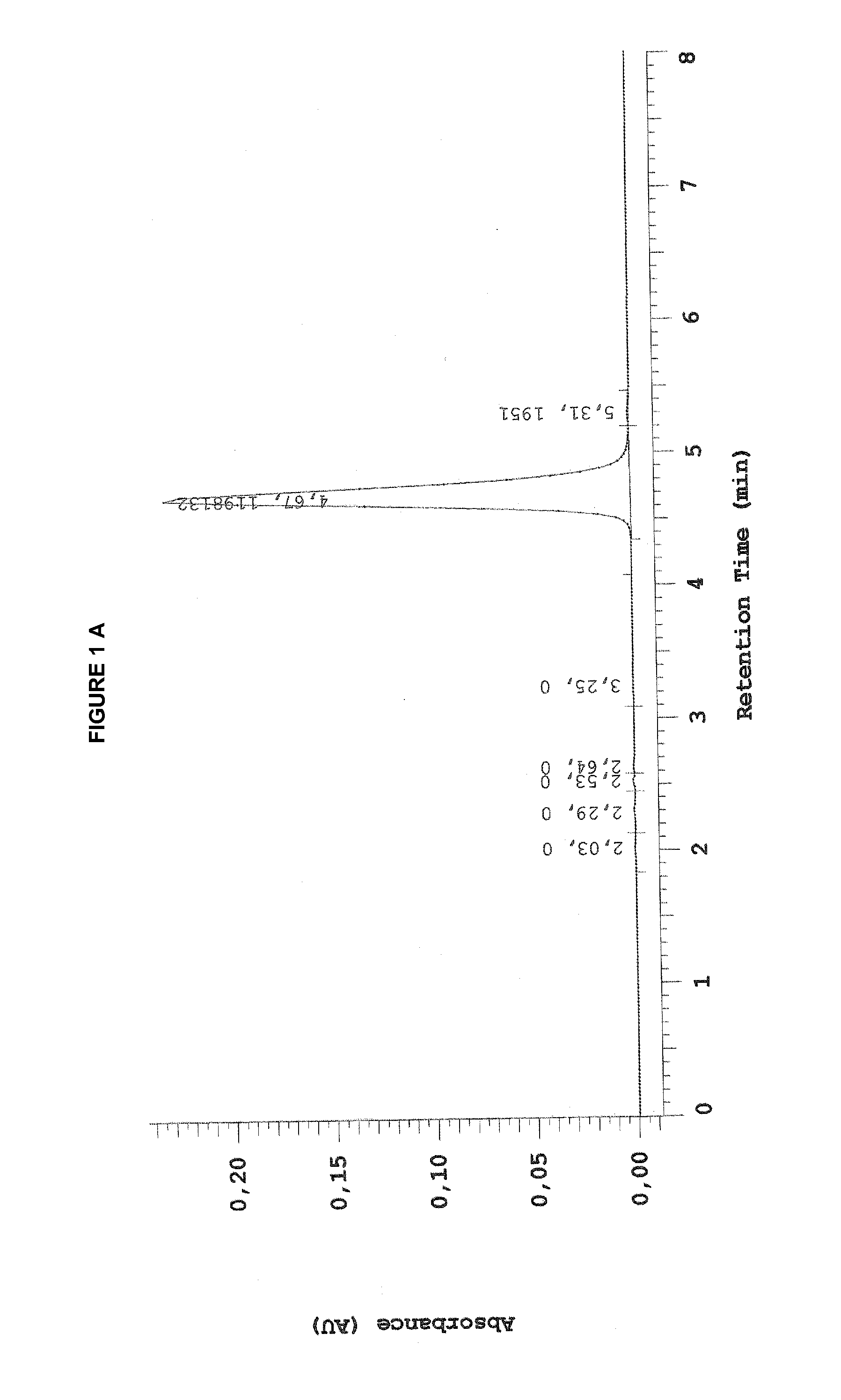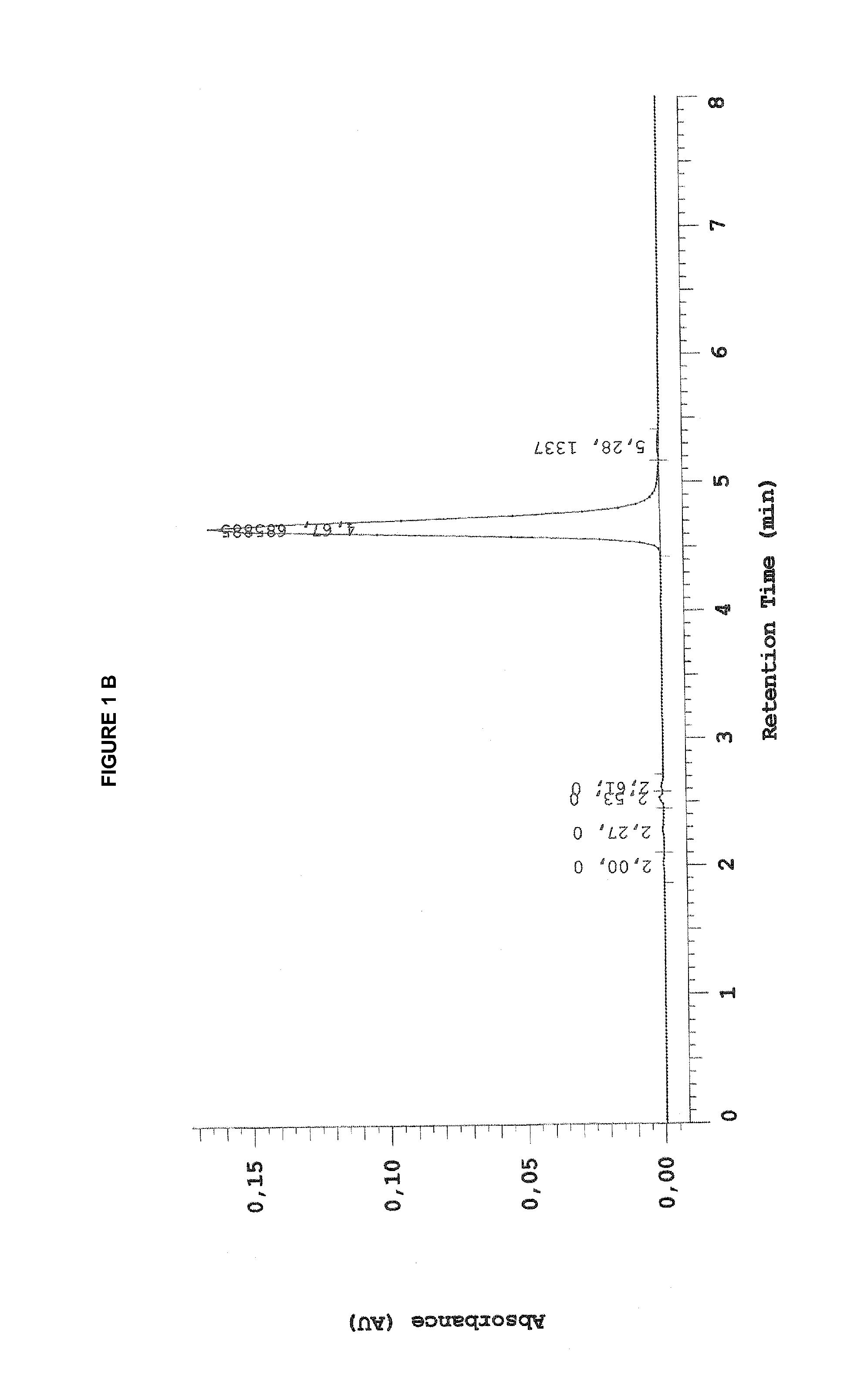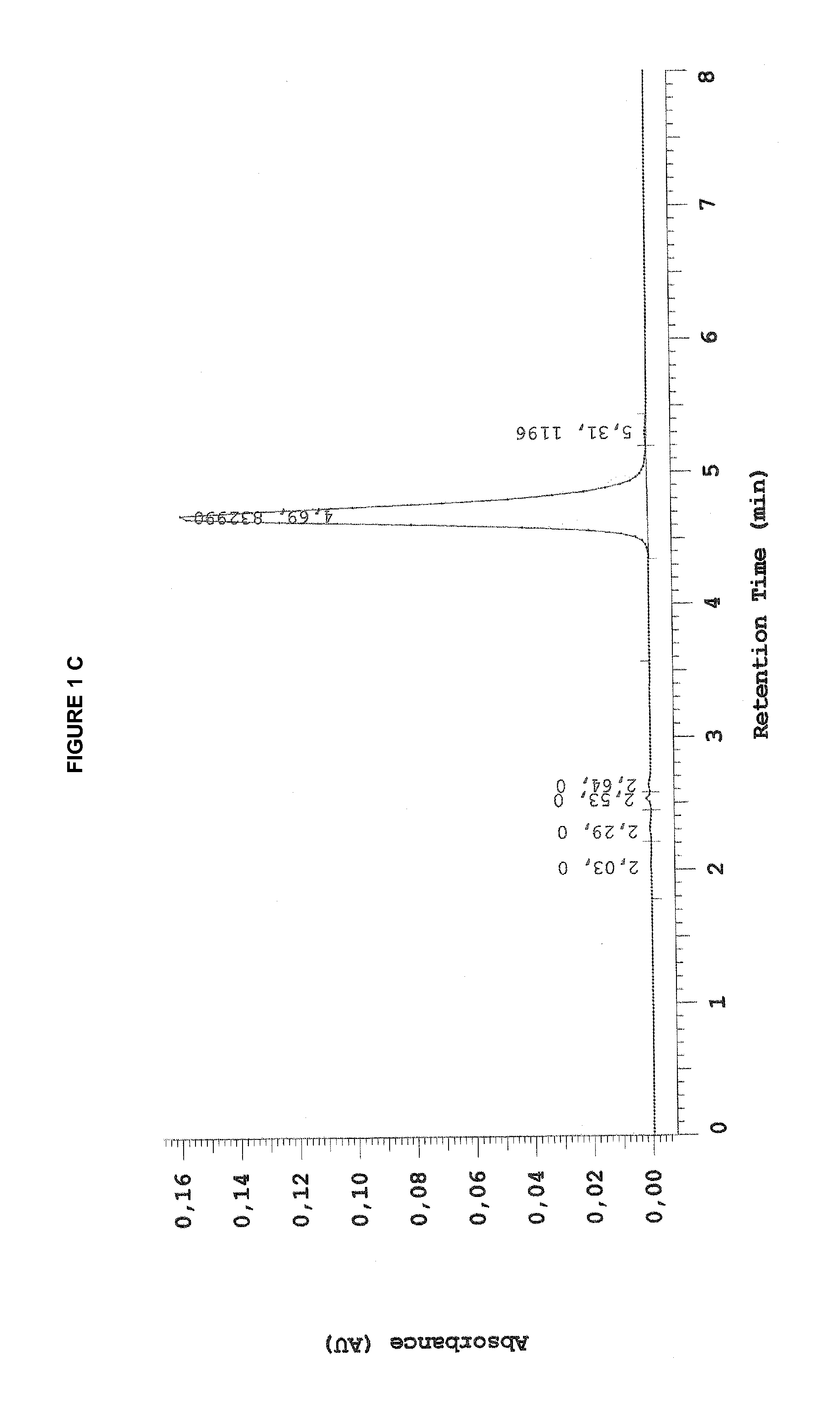Composition and method for treating HPV
a human papillomavirus and formulation technology, applied in the field of viral infections, can solve the problems of high risk of cervical precancer, invasive cancer, and precancerous lesions, and achieve the effects of less viscosity, more viscosity, and easy modulation of viscosity
- Summary
- Abstract
- Description
- Claims
- Application Information
AI Technical Summary
Benefits of technology
Problems solved by technology
Method used
Image
Examples
example 1
Lyophilization Conditions
[0112]Lyophilization of aqueous compositions comprising a bioadhesive polymer and, optionally, a plasticizer and / or cidofovir to obtain a porous malleable matrix was performed according to the following protocol.
[0113]The polymer is dispersed in distilled water under slow agitation until complete homogenization. Optionally, the obtained dispersion is agitated again until complete homogenization after the addition of the plasticizer. Cidofovir is dispersed and a 2 M NaOH stock solution is added to reach pH 7. The obtained mixture is transferred to a crystallizer and is lyophilized. The lyophilization conditions are the following:
[0114]Freezing
StageTemperature (° C.)Time (h)Pressure (bar)1−35 (−30 to −35)3.0 (2 to 4) ambient2−35 (−30 to −35)0.5 (0.4 to 0.6)ambient
[0115]Primary Drying
StageTemperature (° C.)Time (h)Pressure (bar)1−15 (−10 to −20)3.0 (2 to 4)0.8 (0.7 to 0.9) 2−10 (−10 to −20)12.0 (7 to 17)0.1 (0.05 to 0.15)
[0116]Secondary Drying
StageTemperature...
example 2
Components of the Lyophilized Composition
[0117]The following components and mixtures were evaluated for their capacity to result in the desired “sponge” structure after lyophilization.
[0118]Bioadhesive polymers:[0119]Hydroxypropylmethylcellulose (HPMC)[0120]HPMC E5: viscosity: 5 mPa·s (=5 cp) (aqueous solution of 2%)[0121]HPMC E15: viscosity: 12-18 mPa·s (aqueous solution of 2%)[0122]HPMC 4000: viscosity: 4000-5600 mPa·s (aqueous solution of 2%)[0123]HPMC K15: viscosity: 11250-21000 mPa·s (aqueous solution of 2%)[0124]Sodium carboxymethyl cellulose (NaCMC)[0125]Hydroxyethylcellulose (HEC)[0126]HEC Natrosol 250HX: viscosity: 1500-2500 mPa·s (aqueous solution of 1%)[0127]HEC Natrosol 250HHX: viscosity: 3500-5500 mPa·s (aqueous solution of 1%)[0128]HEC Natrosol 250M: viscosity: 4500-6500 mPa·s (aqueous solution of 2%)[0129]HEC H4000: viscosity: 4500-6500 mPa·s (aqueous solution of 2%)[0130]Carbomer 974P[0131]Hydroxyproprylcellulose (HPC)[0132]HPC LF: viscosity: 75-150 mPa·s (aqueous so...
example 3
Evaluation of Different Lyophilized Placebo Compositions
[0139]Different conditions and concentrations of the components were tested to evaluate the desired characteristics of the lyophilisate. Desired characteristics are a sponge texture that is easily malleable when dry and that can be easily and / or rapidly rehydrated into a gel with intermediate viscosity (i.e., not too liquid and not too viscous).
[0140]The following conditions were kept constant for ease of comparison: the diameter of the crystallizer (4 cm), the quantity of water used for the dispersion of the components (ad 6 g, meaning water was added to the composition up to 6 g of the final composition before lyophilization), and the lyophilization cycle.
[0141]In the first instance, placebo lyophilisates were evaluated (i.e., without cidofovir). Table 1 lists the tested concentrations of polymer and plasticizer.
TABLE 1Polymermg / cm2Plasticizermg / cm2remarksHPMC E53.97——malleable spongeHPMC E57.95——malleable spongeHPMC 40009.54...
PUM
| Property | Measurement | Unit |
|---|---|---|
| weight % | aaaaa | aaaaa |
| weight % | aaaaa | aaaaa |
| weight % | aaaaa | aaaaa |
Abstract
Description
Claims
Application Information
 Login to View More
Login to View More - R&D
- Intellectual Property
- Life Sciences
- Materials
- Tech Scout
- Unparalleled Data Quality
- Higher Quality Content
- 60% Fewer Hallucinations
Browse by: Latest US Patents, China's latest patents, Technical Efficacy Thesaurus, Application Domain, Technology Topic, Popular Technical Reports.
© 2025 PatSnap. All rights reserved.Legal|Privacy policy|Modern Slavery Act Transparency Statement|Sitemap|About US| Contact US: help@patsnap.com



